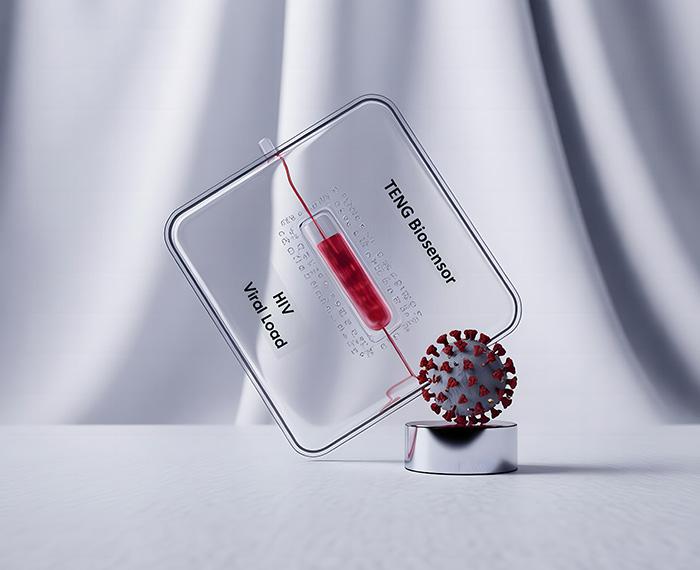
Subscribe to Pittwire Today
Get the most interesting and important stories from the University of Pittsburgh.Pitt researchers earned Gates Foundation funding to develop an HIV sensor

Two Pitt researchers have been awarded a grant from the Gates Foundation to develop a sensor to monitor viral load in people with HIV.
The sensor won’t require refrigeration, access to any external medical infrastructure, or even electricity. It will be powered in part by the same blood it is monitoring, making it a potential lifesaver for people in under-resourced or remote areas.
“It would be one of the biggest accomplishments of my life,” said PI Amir Alavi, “to see a device that I have designed is truly helping people.”
Alavi, associate professor and B.P. America Faculty Fellow in Swanson School of Engineering’s Department of Civil and Environmental Engineering, is partnering on the project with Alan Wells, Thomas J. Gill III Professor of Pathology and executive vice chairman of the Section of Laboratory Medicine in Pitt’s School of Medicine.
Alavi and Wells, who is also medical director for UPMC Clinical Laboratories, recently collaborated on similar technology, developing a sensor that measures the electrical conductivity of blood. Now, their goal is to analyze changes in blood conductivity to identify and measure the amount of a specific virus in a person’s blood.
“It’s been a wonderful collaboration because we’re very complementary in our approaches, expertise and areas of focus,” Wells said.
The pair plan to design a miniaturized, microfluidic triboelectric nanogenerator (TENG)-based biosensor that can detect HIV viral load from just a microliter of blood, which requires only a finger prick. This handheld device will be able to report HIV viral load at the press of a button, enabling care in resource-limited or decentralized settings.
Wells said, “I have lived and worked as a medical professional in many different countries and situations where one does not always have access to what we might call a ‘Western-supported clinical lab,’” where clinicians have the infrastructure needed to support the testing apparatuses found in a major metropolitan facility. “This sensor addresses those problems.”
The key to creating these sensors, and to their ability to measure viral load, lies in the rational design of the materials of which they’re made, Alavi said. “It’s all about how you engineer a multilayered, multi-material system to generate electricity.”
The sensors use a built-in triboelectric nanogenerator. The triboelectric effect generates electricity by exchanging electrons when two materials come into contact and then separate; it’s the same mechanism responsible for the static electric shock you may get touching a doorknob after walking on carpet.
Maximizing the power output of a TENG sensor relies on using the right materials, just as a static shock is more likely after walking on carpet than on concrete.
While working on a different project, Alavi realized biological substances like blood could be used as a component in these sensor-nanogenerators while also being monitored for changes in the electrical signals by the sensor. For this project, the researchers will investigate how the highly negatively charged biomolecules of the HIV virus can change the generated electrical signals.
HIV is a good use-case — because it’s high charge, it should make a clear impact on blood’s electrical properties. And such a tool could make a huge impact.
“HIV goes misdiagnosed in many communities,” Wells said. For people who are treating HIV, self-monitoring lets them know if treatment is working to keep their viral load low. “If your viral load is low, you don’t pass on HIV,” he said. “And you are way less likely, if pregnant, to pass it to your baby.”
Ultimately, the TENG sensor won’t just be a game-changer for people with HIV. “This will be a platform,” Wells said. “It can be adapted to other infectious diseases and viruses.”
Rendering courtesy of Amir Alavi

